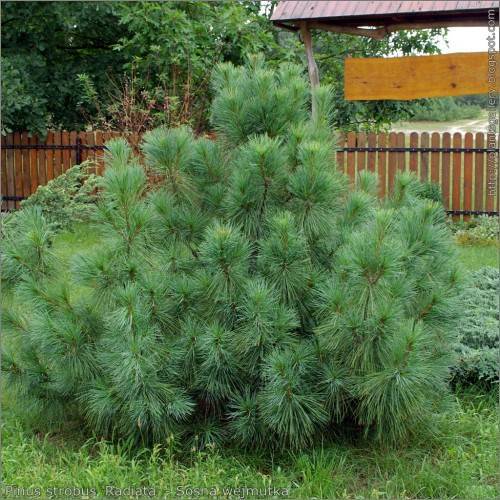
dwarf eastern white pine
Pinus strobus 'Radiata'
Cycle:
Perennial
Watering:
Frequent
Hardiness Zone:
4
Flowers:
Flowers In Spring
Sun:
Full sun, Part sun/part shade
Soil:
Rocky , gravelly , dry
Cones:
Yes
Leaf:
Yes
Growth Rate:
Low
Drought Tolerant:
Yes
Salt Tolerant:
Yes
Care Level:
Medium
watering
Water Vanderwolf's Pyramid Pine regularly, approximately 1-2 inches per week during growing season. Reduce watering to once every 2 weeks during summer months (June - September) when temperatures rise. During winter months (November - March), water only when the soil feels dry to the touch. Make sure to soak the soil when you water to encourage deep root growth. Also, make sure to water in the early morning to ensure it dries during the day.
sunlight
Vanderwolf's pyramid pine is a slow-growing evergreen that thrives in full sun with a minimum of 6 hours of sunshine per day. In areas of high humidity where wind protection is necessary, the plant can also tolerate light shade. To ensure optimal growth, the plant should be placed in a location that receives morning sun and afternoon shade. The sunnier the location, the fuller and bushier the pine tree will be.
pruning
Pruning of the Vanderwolf's Pyramid Pine should be done at least once a year, with more frequent pruning being needed in more active growing seasons. Pruning should be done in late winter or early spring, just before the new growth appears. Avoid pruning later than early spring to prevent any potential damage from new growth that will be curtailed when pruning is done. Prune away any dead, diseased, crossing or broken branches as well as any branches that have begun to grow towards the center of the plant. Take off no more than 25% of the total branch mass at any time. Lastly, prune any branches that are growing beyond an appropriate size or that are encroaching onto other parts of the garden or landscape.
